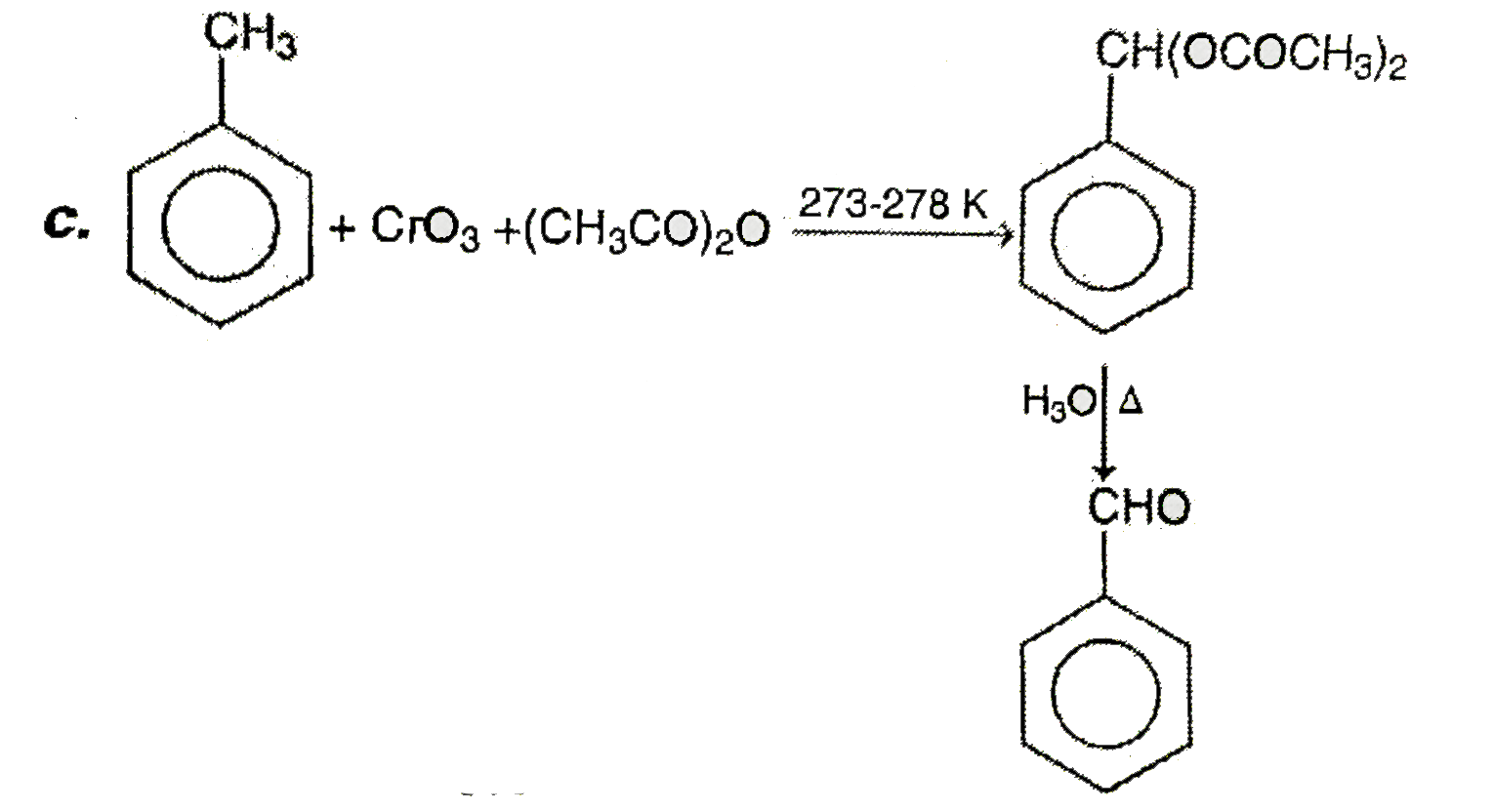Illustrate the difference between Gattermann-Koch reaction and Gattermann formylation.
To illustrate the difference between the Gattermann-Koch reaction and Gattermann formylation, we can break down the two reactions step by step.
Step 1: Define the Gattermann-Koch Reaction
The Gattermann-Koch reaction is a method used to introduce an aldehyde group into an aromatic ring. In this reaction, benzene is treated with carbon monoxide (CO) and hydrochloric acid (HCl) in the presence of aluminum chloride (AlCl3) as a catalyst. The product of this reaction is an aromatic aldehyde.
Reaction:
Benzene+CO+HClAlCl3−−−→Benzaldehyde (C6H5CHO)
Step 2: Define the Gattermann Formylation
The Gattermann formylation is a similar reaction but involves the use of hydrogen cyanide (HCN) instead of carbon monoxide. In this reaction, benzene is treated with HCN and HCl in the presence of AlCl3. The product of this reaction is also an aromatic aldehyde, specifically benzaldehyde.
Reaction:
Benzene+HCN+HClAlCl3−−−→Benzaldehyde (C6H5CHO)
Step 3: Compare the Reagents
The main difference between the two reactions lies in the reagents used:
- Gattermann-Koch Reaction: Uses carbon monoxide (CO) and hydrochloric acid (HCl).
- Gattermann Formylation: Uses hydrogen cyanide (HCN) and hydrochloric acid (HCl).
Step 4: Summarize the Products
Both reactions yield the same product, which is benzaldehyde (C6H5CHO), but the pathways and reagents involved are different.
Conclusion
In summary, the Gattermann-Koch reaction involves carbon monoxide as a reagent, while the Gattermann formylation uses hydrogen cyanide. Both reactions lead to the formation of benzaldehyde.
---
The Gattermann-Koch reaction is a method used to introduce an aldehyde group into an aromatic ring. In this reaction, benzene is treated with carbon monoxide (CO) and hydrochloric acid (HCl) in the presence of aluminum chloride (AlCl3) as a catalyst. The product of this reaction is an aromatic aldehyde.
Benzene+CO+HClAlCl3−−−→Benzaldehyde (C6H5CHO)
The Gattermann formylation is a similar reaction but involves the use of hydrogen cyanide (HCN) instead of carbon monoxide. In this reaction, benzene is treated with HCN and HCl in the presence of AlCl3. The product of this reaction is also an aromatic aldehyde, specifically benzaldehyde.
Benzene+HCN+HClAlCl3−−−→Benzaldehyde (C6H5CHO)
The main difference between the two reactions lies in the reagents used:
- Gattermann-Koch Reaction: Uses carbon monoxide (CO) and hydrochloric acid (HCl).
- Gattermann Formylation: Uses hydrogen cyanide (HCN) and hydrochloric acid (HCl).
Both reactions yield the same product, which is benzaldehyde (C6H5CHO), but the pathways and reagents involved are different.
In summary, the Gattermann-Koch reaction involves carbon monoxide as a reagent, while the Gattermann formylation uses hydrogen cyanide. Both reactions lead to the formation of benzaldehyde.
Topper's Solved these Questions
- ALDEHYDES, KETONES AND CARBOXYLIC ACIDS BOOK - PRADEEPCHAPTER - ALDEHYDES, KETONES AND CARBOXYLIC ACIDS EXERCISE - COMPETITION FOCUS JEE (MAIN AND ADVANCED)/MEDICAL ENTRANCE SPECIEAL (ASSERTION-REASON TYPE QUESTIONS) Type - II
14 Videos
- ALCOHOLS, PHENOLS AND ETHERSBOOK - PRADEEPCHAPTER - ALCOHOLS, PHENOLS AND ETHERSEXERCISE - IMPORTANT QUESTIONS FOR BOARD EXAMINATIONS.
29 Videos
- APPENDIXBOOK - PRADEEPCHAPTER - APPENDIXEXERCISE - MODEL TEST PAPER <br> (Section C )
15 Videos
Similar Questions
Knowledge Check
Choose the Gattermann-Koch reaction.
A B
B C
C DNone of the above
DNone of the above
Gattermann Reaction
View SolutionGattermann Reaction
View SolutionGattermann Aldehyde Reaction
View SolutionGattermann Koch Aldehyde Reaction
View SolutionWhat is the difference between addition reaction and substitution reaction ?
View SolutionWhat is the difference between addition reaction and substitution reaction ?
View SolutionWrite two differences between order of a reaction and molecularity of a reaction.
View Solution
